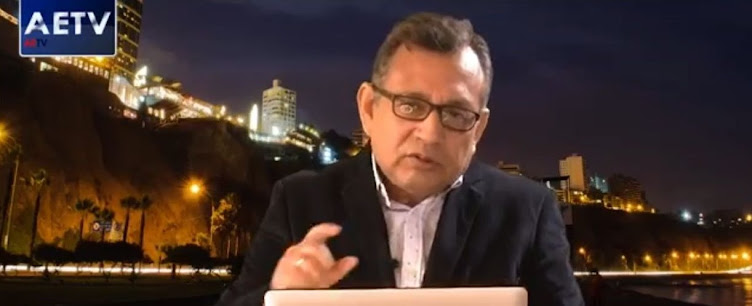Peruvian Peaks
The small, poor country that made the right economic moves.
By Daniel Gross
Jul 29, 2009
Updated: 4:06 p.m. ET Jul 30, 2009
It's been a difficult 18 months for the global economy. Many of the largest economies in the world—Germany, Japan, the United Kingdom, the United States—have been mired in a slump. The downturn has swamped many smaller, developing economies. Even Australia, which hasn't seen its economy contract since the early 1990s, is threatening to go into recession. There are a few bright spots, of course. The juggernauts that are China and India are rolling along. But in the Western Hemisphere, it's been a grim tale from Tierra del Fuego in the south to Hudson Bay in the north. Reforming Argentina, resurgent Brazil, stable Chile—resource-dependent countries that have made great strides in recent years—and hard-luck Mexico, have all slipped into recession. The U.S. economy began to shrink in December 2007, although it may be now be bouncing back, and Canada seems to have endured a mild recession.
In the Western Hemisphere, one small country has outperformed its larger, richer, neighbors to the north. Its export-dependent economy has weathered the global credit tsunami in good shape. Its stock market, which took a big hit in 2008, has more than doubled this year, spurring investment firms to introduce products allowing Americans to invest there directly. Its public finances seem to be sound, and the authorities appear to be making the right countercyclical moves. What's the name of this mystery country that finds itself on an economic shining path? If you guessed Peru, you're right.
The small, poor country benefited from many of the same trends that propelled global growth during the recent expansion—the China-inspired demand for commodities were a godsend to a country that nature endowed with substantial natural resources. According to Bloomberg.com: "Peru is the world's third-largest producer of copper, zinc and tin, the No. 1 producer of silver and fishmeal and No. 5 in gold." (Moneybox hypothesizes that Peru is also the largest exporter of groups of musicians who play pipes in public spaces like Harvard Square in Cambridge, Mass., and Grand Central Station in New York City.) As a result, the Economist reported, "Peru's growth has exceeded that of most other countries in the region during the last seven years, driven by high global mineral prices and expanding output from the natural-resources sector, including from the huge Camisea natural-gas field." In 2008, according to the CIA World Factbook, Peru grew at a blistering 9.2 percent.
In the latter half of 2008, being a poor, export-dependent, commodity-producing country set you up for a vicious downturn. But Peru has weathered the storm, in large part because President Alan García, an old leftist turned center-leftist, and the Peruvian central bank have proved adept at a set of capabilities notably lacking in the United States in recent years: sound fiscal and financial management. Fearful of a return of hyperinflation amid rapid growth, Peru's central bank raised interest rates throughout 2008. Instead of spending the foreign currency that piled up on its books ($32 billion at the end of 2008), the government saved it. In 2008, Peru ran a $3.3 billion budget surplus.
And so, when troubles came, it was able to respond in textbook fashion. In December 2008, García announced a stimulus program, promising to boost government spending by $3.2 billion, and to take up to $10 billion in further measures. The total of $13 billion in promised stimulus doesn't sound like much, but that's equal to about 10 percent of Peru's GDP. (By contrast, the big stimulus package Congress passed in February was about 5 percent of U.S. GDP.) The central bank's 2008 vigilance against inflation left it with plenty of room to cut rates. So far this year, it has reduced the benchmark lending rate from 6.5 percent to 2 percent.
As a result of these actions, during the first half of the year, Peru's economy grew 0.9 percent. Martin Perez, Peru's minister of foreign trade and tourism, told Bloomberg he expects GDP to grow between 2.5 percent and 3 percent this year. "Exports have suffered around 15 percent but the stimulus package the government has passed is trying to bring forth internal demand," he said.
A sharp slowdown from recent years? Yes. But on a relative basis, it's outstanding. Meanwhile, the growing consensus that the worst may be over for the global economy has boosted Peru's stock market. As the Financial Times noted recently, Peru's was the best performing of the world's stock markets in the first half of 2009, up more than 100 percent. In late June, iShares launched an exchange-traded fund that allows individual U.S investors to gain exposure to the hot Peruvian market. As this chart shows, the fund is up 8.3 percent in its first five weeks of trading.
Of course, the rollout of a new investment product aimed at a hot emerging market after it's had an extraordinary run is frequently a sign of the top. Investors plunging in now have to hope that Peru's stock market, like that other great American discovery in Peru, Machu Picchu, hasn't already seen its most glorious days.
http://www.newsweek.com/id/209519

1 comentario:
la verdad es que hacerle caso a Newsweek o Businessweek es una pèrdida de tiempo, por el nivel tan superficial de su anàlisis. Los ùnicos a creer son, el NY Times (USA), The Economist (UK) y cualquier publicaciòn alemana (si fuese del Deutsche Bank, mejor aun)
Publicar un comentario